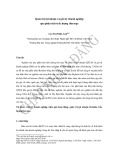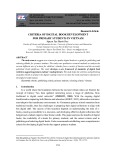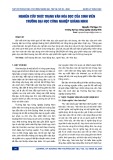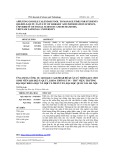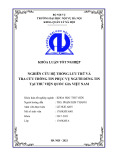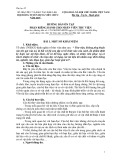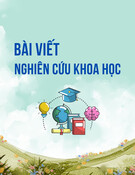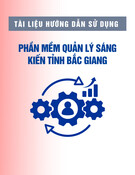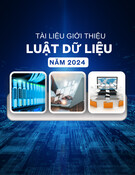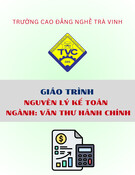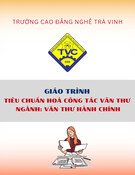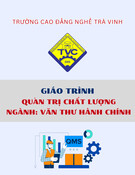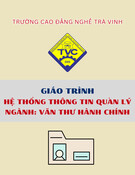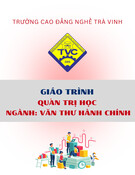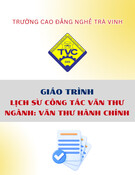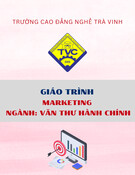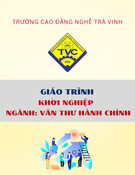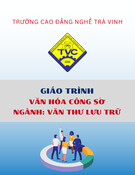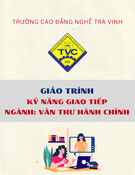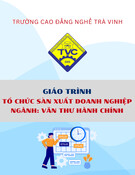
1
Interactive Learning in Museums of Art and Design
17–18 May 2002
‘The Interactive Experience: Linking Research and Practice’
Marianna Adams, Institute for Learning Innovation, Annapolis, MD
Theano Moussouri, Research Centre for Museums and Galleries, University of
Leicester
In our research and evaluation of learning in museums on both sides of the Atlantic
we have noticed some common and recurring themes in the data that are important to
any thoughtful exploration of visitor response to interactive experiences in
museums. This paper is designed as an overview of our observations of, and
conclusions from, evaluation and research of interactive spaces in different types of
museums, both our own and those of our colleagues. It is an informal review of
studies as they pertain to interactive spaces in art museums rather than a formal,
academic review of literature or meta-study. Consequently, in the spirit of facilitating
a dialogue within the field, the format of this paper is conversational, without
encumbering the reader with massive citations after each point raised. A complete
bibliography at the end of this paper provides information on studies used in this
overview, but individual references will not be accompanied by specific citations. The
organization of this paper will begin with broad issues and progressively sharpen
focus to issues most pertinent to art museums as detailed below:
· First, we will briefly establish a broad-view, working definition of interactive
spaces for the duration of this paper and address some of the problems connected
with any efforts to define terms.
· Second, we discuss findings from research that provide insight into visitors’
attitudes and perceptions of interactive museum experiences in all types of
museums and then focus a bit closer on ways in which interactive spaces in art
museums are similar to and different from interactive spaces in children’s and
science museums.
· Third, the focus moves more narrowly to articulate two basic models for
interactive spaces in art museums.
· Fourth, a visitor-centred framework based on our experience in conducting visitor
research is proposed for art museums to use as they develop interactive spaces for
visitors.
Towards establishing boundaries and definitions of ‘interactive’
The term ‘interactive’ is admittedly difficult to define. Our attempt here is to discuss
ways the term is used, temporarily to set the boundaries we will impose on ourselves
throughout this paper and confess to the problems such efforts create. We find that the
word ‘interactive’ is freely used to describe a variety of experiences in museums.
Other words are often used interchangeably to refer to what most people think of as
interactive experiences, but sometimes researchers and/or museum practitioners draw
distinctions between the terms. Other words used are ‘hands-on/minds-on’ and
‘participatory’, and words such as ‘immersive’ are also used to refer to open-ended or
virtual reality environments.

2
From a review of the literature it seems that the term ‘hands-on’ is used to refer to the
mass of the exhibits that can be touched and manipulated. It is often used in
connection to the term ‘minds-on’ to indicate that hands-on exhibits must provide
something to think about as well as touch. The term ‘interactive’ emphasizes the part
that visitors play in the process of ‘interaction’, although some people constrain the
meaning of interactive to refer solely to computer-based experiences in the museum.
The term ‘participatory’ refers to engaging visitors in a conversation with the exhibit
and with other visitors. ‘Participatory’ or ‘immersive’ can be used to describe the
experience that interactive works of art set up for viewers – that is, the opportunity to
participate, in collaboration with the artist, in creating or changing the artwork (For
more information on definitions of these terms see Lewis 1993, Gregory 1989,
Williams 1990, Eason and Linn 1976, Hein 1990, pp. 24–5, Miles and Thomas 1993,
Ramsay 1998 and Graham 1996).
This cluster of terms (‘interactive’,’ hands-on/minds-on’, ‘participatory’, ‘immersive’)
implies different levels or types of engagement by visitors, and good arguments could
be made to draw greater distinctions among these terms within the larger umbrella
concept of ‘interactivity’. The focus of this paper prevents digression into greater
examination of terminology, and the term ‘interactive’ will therefore be used to refer
to this family of experiences, which actively involve the visitor physically,
intellectually, emotionally, and/or socially. Although research does suggest that the
gradations of meaning and use of different terms is an issue for museum practitioners,
it is certainly not an important issue for visitors. When there are opportunities for
physical, intellectual, emotional and social engagement, visitors tend to say things
such as ‘I get to do cool stuff”, ‘I get to touch things’, and ‘It’s fun!’
Hand in hand with the issue of vocabulary used to describe interactive experiences
goes the fact that many different types of experiences in museums could justifiably be
described as interactive, hands-on and/or participatory. For example, a traditional tour
might involve docents and visitors in open-ended dialogue or provide opportunities
for visitors to touch examples of different materials or examine artists’ tools.
Additionally, a museum’s website or random access mobile wireless devices used in
the gallery could also qualify as an interactive experience. Because the focus of this
conference is on interpretation that is designed as an integral part of gallery displays
or in separate areas, this paper will draw on research conducted into these dedicated
spaces or on components within an art exhibition, augmented by findings in science
and children’s museums. Certainly many of these research findings may have
relevance to the wider range of interactive experiences in art museums.
Just this small foray into setting boundaries and a definition for interactivity presents
problems. It is a discussion that needs to continue in the field at large. As we move to
greater consensus on terms we will concurrently push ourselves to deeper thinking
about the outcomes of interactive experiences and towards a greater understanding of
how visitors learn in these spaces.
What are visitors’ attitudes towards, interest in and perception of interactive
experiences in all types of museums?
The largest body of research into interactive spaces comes from science and children's
museums, but the few studies that have been done in art museums suggest some

3
important similarities to the findings in other types of museums. There are three main
themes that we have noticed in the research. First, museum visitors value interactive
experiences that enable them to engage in genuine exploration, follow their own
interests and facilitate social interaction. Second, interactive spaces in art museums
can help break down public perceptions of the art museum as an élitist and family-
unfriendly institution. Third, engagement in interactive spaces over time provides
visitors of all ages with inquiry and looking skills needed to have their own dialogue
with objects of art.
Visitors value interactive museum experiences
In a study by Moussouri conducted in interactive exhibitions in museums in the UK,
visitors were asked to describe their experience in interactive museums or exhibitions
as compared with their experience in traditional museums. The main aim of this study
was to examine the agenda of family groups visiting interactive museums. Families
were interviewed in the groups in which they visited about their motivation for
visiting, their visit plans and their experience during the visit. Their museum
experience seemed to be influenced by the family agenda for the visit and the physical
context of the exhibitions visited, which consisted of interactive exhibits. Three
museums or exhibitions within museums were used as case studies: Eureka! The
Museum for Children in Halifax; the Archaeological Resource Centre (ARC) in York;
and the Xperiment! Gallery at the Museum of Science and Industry in Manchester.
From a comparison of the findings we were able to identify common themes in family
visitors’ perceptions of interactive spaces between the three museums. Table 1
presents adult and child visitors’ ideas about interactive and traditional museums with
static displays using their own terms.
Interactive Non-interactive
Exciting, enjoyable
Interesting way to demonstrate
things
Colourful
Touch, feel, hold, handle
Get involved, participate
Boring
Keep off
Look-but-don’t-touch
Nothing to do
Explore and play
Experiment
Use all senses
Explainers (social interaction)
Passive
Look, read
Labels
Appreciate, think, understand
Get an insight
More educational, easier to learn
Learn more and in different ways
Cannot absorb anything
Aimed at children
Exhibits are unbreakable
Children are safe here
Freedom of movement
Relaxing
Adult-centred
Keep an eye on the children
Afraid of breaking things
(behavioural & physical
constraints)
Time flies (flow)
Stay longer
Remember (long-term effect)
Get in, get out

4
Table 1. Visitors’ ideas about interactive and non-interactive museums
A large number of visitors at Eureka! and the ARC thought that interactive museums
were unique places. Eureka! seemed to be very successful at introducing abstract
concepts, starting with familiar/everyday objects that people could relate to. Visitors
at the ARC felt that it was a special space because they could touch and examine the
artefacts. This close contact with real objects made them more aware and helped them
appreciate archaeology and the work archaeologists do. They felt that the ARC had
given them an insight into how archaeologists reconstruct the past from the material
evidence. Apart from the artefacts, visitors appreciated having explainers to interact
with, as well as activities to do with their hands. One visitor said that it had a
therapeutic effect on her and that she lost her sense of time in the ARC. Having had
enriching personal and social experiences in the ARC seemed to reinforce visitors’
interest in and commitment to archaeology. A large number of visitors mentioned that
they were planning to join archaeology groups, to take relevant courses or to start
collecting objects.
Commenting on both interactive and traditional exhibition spaces, a number of adults
said that there is a place for both types of institution. The ideal model, however,
would be to have a mixture of both approaches within the same institution. Visitors
felt that the ‘hands-on’ approach made the subject matter of the exhibitions (science
and technology, history and archaeology) accessible to people of all ages – especially
children. Parents, in particular, said that they used visits to the interactive exhibitions
to affect their children’s learning and interest in the subject matter. They talked about
the experience in terms of short-term and long-term outcomes of learning. In the short
term they used interactive museums as a resource for self-directed learning and for
helping their children achieve scientific literacy or learn about history and
archaeology. The vast majority of the families in this study had a very strong interest
in the subject matter covered by the museums visited. In the long term parents hoped
that visits to interactive exhibitions would encourage their children to become
scientists or archaeologists.
It is worth mentioning that interactive exhibits could communicate messages of their
own, which did not relate to the messages the exhibition development team wanted to
communicate. Further, visitors’ own agendas and preconceptions could also affect the
way they interpreted and remembered the exhibitions. The interpretation visitors
provided seemed to fall into different categories, one of which referred to the
interactive elements of the exhibitions. One of the themes identified by visitors to
Eureka! and Xperiment, in particular, was ‘how things work’. This may have been
based on previous experience with interactive museum exhibitions and possibly with
books on ‘how things work’. It was not, however, one of the messages or the main
message the museums wanted to communicate.
Interactive experiences create family-friendly environments in the museum
Research suggests that many visitors to art museums perceive that there is ‘nothing to
do’, particularly for children/families, or that science-related museums are more
interesting or fun. Many parents, as well as classroom teachers, feel they are not
sufficiently informed about art to help children explore it or understand it. Research

5
suggests that interactive spaces help bridge this gap. Parents relax and feel equal to
the task of moving through an interactive experience; they learn and feel they are also
helping their children to learn.
In one study at the Speed Art Museum’s interactive Art Sparks gallery in Louisville,
KY, parents were not willing to take their children ‘upstairs’ into the ‘real’ museum
for fear of their children misbehaving or that their children would not be interested in
‘just looking’. This appears to be a stereotype that many families associate with art
museums and one that museums with interactive experiences will have to overcome
and change. It is important to note that the Speed study was conducted several months
after the opening of the Art Sparks interactive gallery and, although it was very
successful in attracting new family audiences, the staff wanted the interactive space to
be an enticement to visit the permanent collections. Since the opening in 1999 two
factors have contributed to changing parents’ perception of the ‘real’ museum: the
permanent collection and exhibitions. First, the education department developed Art
Backpacks that could be checked out in the Art Sparks interactive gallery and
provided engaging activities that families could do together in the main galleries.
Families are using the backpacks with increasing frequency. Second, with repeated
visits to the interactive gallery there is now evidence that, as families become more
familiar over time with the museum through the interactive gallery, they become more
willing to venture into the ‘real’ museum.
Interactive spaces can assist visitors in developing inquiry/looking skills
There was also an interesting finding in this same study regarding school students.
Repeated experiences in an interactive gallery can provide a model and engage
children in object-centred inquiry, and children tend to implement these looking
strategies when they visit the permanent collections. The important issue in this
finding is the repetition of experiences over time. Children who had visited the
interactive gallery twice or more were more likely than students visiting the gallery
for the first time to engage in higher-level inquiry skills (e.g., moving from simple
naming and identification to comparison, analysis and interpretation) in the tour of the
permanent collection. In addition, those students familiar with the interactive gallery
were more likely than the first-time student visitor to remember works of art in the
permanent collection, as measured by their drawings and descriptive writing a month
A family using Art Backpacks in the Native
American Gallery at the Speed Art Museum
Laramie L. Leatherman Art Sparks Gallery,
Louisville, KY
Photo: Weasie Gaines





